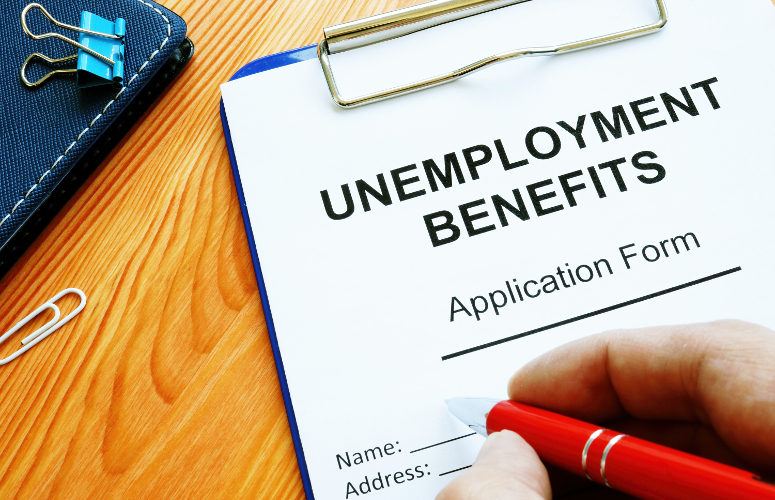
NAIOP Tri-State COVID-19 Response Webinar Addresses Regional Recovery Plan
Public Officials, Industry Experts Discuss Balancing Economic and Health Concerns, Fundamental Shifts in Business and Building Operations
On May 13, 2020The challenges of reopening the economy while balancing health and safety concerns were addressed by public officials and industry experts from across the northeast region as NAIOP’s New Jersey, New York City, Upstate New York and Connecticut/Suburban New York chapters co-hosted a “Tri-State COVID-19 CRE Response Webinar.”
“We are experiencing a disruption like nothing we have seen before, and will be living with this for some time,” said Michael McGuinness, CEO of NAIOP NJ. “As we start to pivot and work on re-entry efforts, we need to understand how government agencies are collaborating with private sectors and other agencies to return the region to full operational capacity.”
McGuinness moderated a public policy discussion with Joe Kelley, New Jersey Gov, Phil Murphy’s chief of staff for economic growth, and Rachel Loeb, chief operating officer of the New York City Economic Development Corporation (NYCEDC). Kelley explained that the Murphy administration has shifted from managing crisis points to recovery mode, focusing on determining what short- and long-term policies to put in place.
“The governor has established the Restart and Recovery Commission to look at things from a global perspective,” said Kelley. “He has also set up an advisory council that will bring together hundreds of leaders from various industry, community, and faith-based groups and institutions across our state to give us ideas from a tactical perspective – coupling a macro-economic view with a micro-economic view.” McGuinness and a number of NAIOP NJ members have been appointed to the Restart and Recovery Advisory Council.
Loeb said the NYCEDC has spent the last decade making key investments in strategic neighborhoods, assets and industries that represent growth opportunities for the future. “When COVID-19 hit we pivoted on a dime, shifting assets into servicing the emergency needs of the moment.” This included turning a Brooklyn cruise terminal into a COVID bed hospital and partnering with over 70 local businesses to meet PPE needs. “With the success of these efforts, we are even more confident that the investments we have made in both advanced and traditional manufacturing are the right way to go.”
With regard to small businesses hit especially hard by the pandemic, Kelley said, “We have small business owners as members of all of these councils, even the larger macro-economic commission.” Loeb noted that the NYCEDC has established a task force “to ensure small businesses will have a voice at the table. We are also partnering with banks to provide capital, grants and low interest loans.”
Balancing Public Health and Economic Recovery
While New Jersey and New York are on the same page when it comes to relying on scientific data and prioritizing public health in any recovery efforts, there are marked differences in how each state is launching reopening plans. When McGuinness asked why no specific timeframes have been floated in New Jersey as they have in New York and Connecticut, Kelley said, “Long story short, from density issues, to the way the virus travels, to incidence levels and hospital occupancy, our situation is uniquely challenging. Decisions made by the governor such as closing schools for the rest of the year underscore the ongoing seriousness of this crisis. However, I expect you will begin to hear more specifics in the next week or two.”
Noting that New York City is following Gov. Mario Cuomo’s guidance on when and how regions open, Loeb said, “Our goal is to have an inclusive blueprint for recovery that supports residents in all five boroughs. Economically, this crisis is impacting sectors entirely differently, and we will be meeting with agencies and major employers to solicit direct feedback so we can identify gaps and make sure they get the guidance they need.”
Both states plan to continue to invest in medical technologies to reduce reliance on other states and countries for the equipment and supplies they need. Kelley said, “New Jersey has been the medicine chest of the world and our folks will continue to lead the way. We have seen the private sector step up to repurpose and reinvent businesses to create supply, and we look to the corporate community to help us prepare for the future.”
Kelley said the administration also is reevaluating the governor’s 2018 economic plan, which placed great emphasis on communities with denser environments such as Newark, Paterson and Jersey City, as well as thriving downtowns like Morristown and Montclair. “There were capital allocation and public policy questions that needed to be answered, on top of NJ Transit and other regional issues. Our balance sheet is in a tough spot, but we will continue to invest in places like Newark, as well as cities like Atlantic City that have been walloped by the pandemic.”
Kelley added, “We also will look for creative uses for stranded assets. I suspect you will see the state be willing to put resources to work to reinvent them, which is good news for you all.”
Operating Businesses in the Post-Coronavirus World
From in-office social distancing measures to increased cleaning and sanitation measures, landlords and tenants are working to reconstruct the way business is conducted in the post-COVID-19 world. Kyle Naye, Programming Committee Chair of NAIOP’s New York City chapter, led a panel discussion focused on some of the return-to-work strategies being implemented to help prevent future outbreaks. “There are a lot of challenges to overcome in managing the tenant arrival experience,” said Naye. “How do you prepare people for it and support them through the process?”
“We see this as an opportunity to further develop relationships with tenants,” said Brian V. Jauntig, senior director of property management for Atlas Capital Group. “The approach that seems most logical is collaborative. We put together a guide for tenants including everything from social distancing to cleaning and disinfecting, and we’re asking property managers at each location to summarize what they are doing in areas such as engaging security and maintaining protocols for wearing PPE, entering the building and using elevators, restrooms and common areas.”
Rachel Casanova, senior managing director of workplace innovation at Cushman & Wakefield, agreed. “We were on a path where landlord/tenant relationships were improving and now we have a more elevated opportunity,” said Casanova, who serves on the firm’s global Recovery Readiness Task Force and helped create a customizable social distancing design concept called the Six Feet Office. “This virus has afforded us the chance to look at how we adapt to change and be curious about how we think about talent, culture, where we work, and the value of people coming together.”
Keeping Workers Safe and Healthy is the Top Priority
In the short term, keeping people healthy and transmissions down is the number one priority. “We’re not in a place where people feel safe,” said Michael Chappell, principal and strategy director for Gensler. “However, we need to put things in place that can evolve. Today’s priority may not be the same tomorrow, so we need to try things, see what works and build on those learnings to determine what the new normal will be like.”
Casanova added, “There is no precedent and no best practices, so we need to ask questions, present ideas and listen. The key is to find new ways to make the experience great, so that workers will not see it as a limitation on what they used to have. We can’t make the mistake of creating such a sterile environment that no one wants to come to work.”
Jauntig believes reopening will involve a gradual shift over time. “It will not be 100 percent occupancy on Day One. In buildings we manage, fitness areas and common space lobbies are closed for the foreseeable future. People want to know all health and safety protocols are in place, and we’re erring on the side of caution and removing every obstacle that would make people feel unsafe to enter a workspace.”
Michael Diamond, president of Premier Maintenance, said increased efforts to keep buildings clean is critical to tenants’ health and safety. “The focus has shifted from cleaning dirt to sanitizing, and landlords and tenants will need to put revised protocols in place. Some corporate clients have the capacity to do high touch surface cleaning, but
sanitizing requires more labor and product and most of our customers want to be in a competitive price range. As people come back to work, we will have to see how we can reallocate labor and avoid price increases.”
The Future of Collaboration
Asked about the future of open, collaborative workspaces, Chappell said, “When people ask if this the death of open plan offices or conference rooms, my response is, ‘Are we talking about today or tomorrow?’ For now, working close to home and not traveling to dense urban environments could help with transitioning people back to work. Longer term, it could mean the office post-pandemic is more about supporting organizational culture, with a greater proportion of spaces dedicated to collaboration.”
“The comfort of alternative ways of working has a future, but home is not the most productive place for everyone,” said Casanova. “We will likely see more flexible spaces that eliminate transportation issues and accommodate workers who can’t or don’t want to go to a crowded office but may be able to get to a collaborative space. We have to see how the human psyche progresses. The more vaccines and treatments progress, the better these concepts will proceed.”
Jauntig added, “As landlords, the most important thing we can do is give our tenants the tools they need to let their employees know they are a good employer, and that their landlord is doing what’s necessary to protect them when they come back to work.”
To access more business news, visit NJB News Now.
Related Articles:





